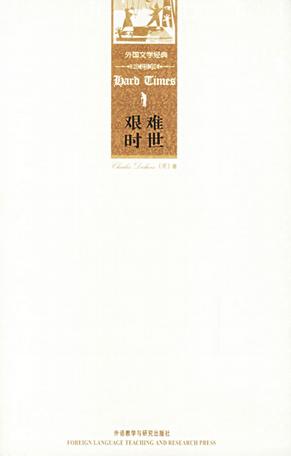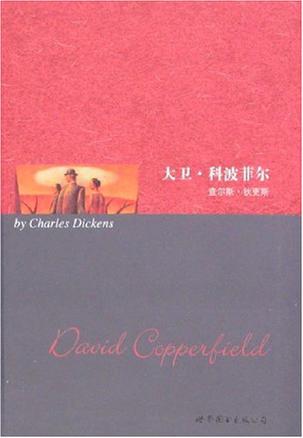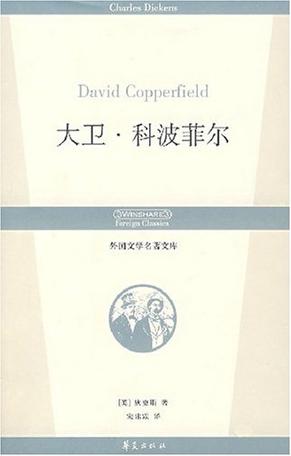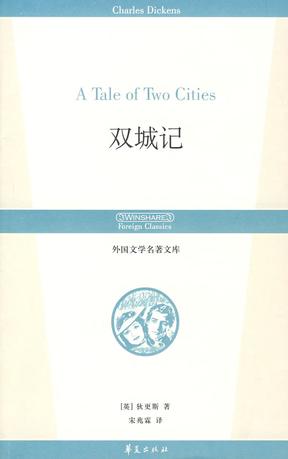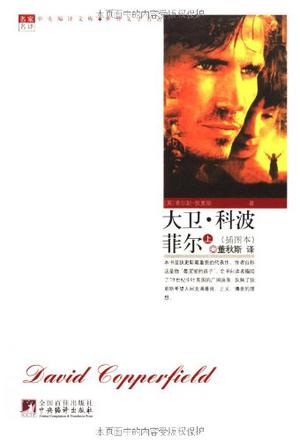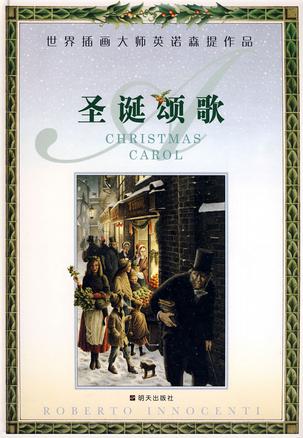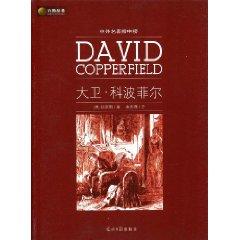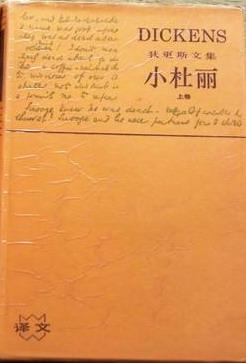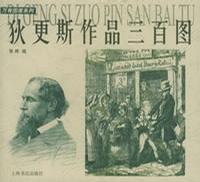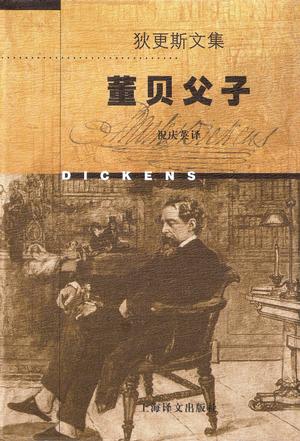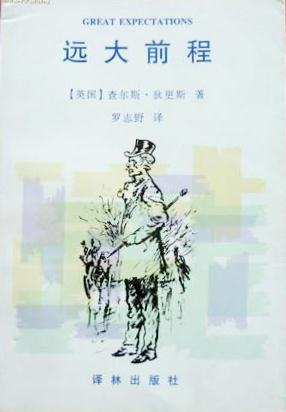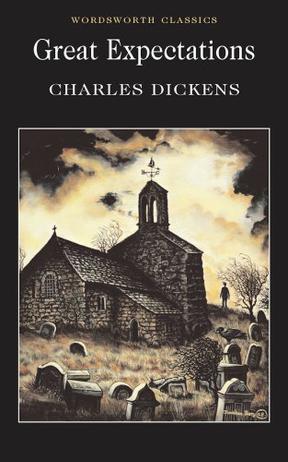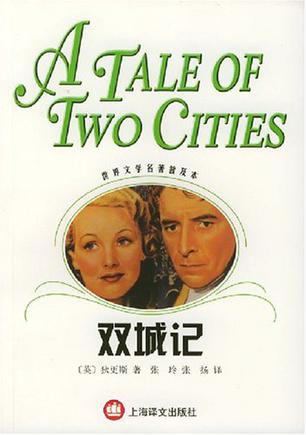欢迎来到相识电子书!
标签:狄更斯
-
艰难时世
在工业小城焦煤镇,人们被禁锢和奴役着,没有个人自由。所谓的“教育家”格拉德格林倡导一套窒息人性的教育方式,结果反而扼杀了自家儿女的天性。而焦煤镇的巨富庞得贝为维护“自我奋斗成功”的虚假形象,不惜抛弃生母,最终落得一个众叛亲离的下场。 本书是十九世纪英国著名批判现实主义作家狄更斯的又一巨著。小说描绘了资产阶级的唯利是图、工人群众的贫困和苦难,以及劳资的矛盾和斗争。作者以一种近乎漫画式的笔调出神入化地展示了一系列典型的人物性格。本书为英文版。 -
匹克威克外传
《匹克威克外传》是狄更期的第一部长篇小说,也是他的杰出的代表作之一。这部作品反映了极其广阔的生活面,真实地描写了十九世纪初的英国社会。故事的梗概是这样:一位独身的老绅士匹克威克先生,是一个“名流”,也是一个“学者”,又是以他的姓氏命名的一个社团(“区克威克社”)的创办人。他带着几个“匹克威克派”出去游历,一路碰到了种种滑稽可笑的人和事,经过大约两年,他的追随者和他自己都觉得游历够了,“匹克威克社”也宣告解散了,匹克威克先生实行了“退隐”,故事也就此结束了。 -
写给孩子们看的英国史
【内容介绍】 英国著名作家狄更斯为自己的孩子撰写的一本英国历史普及读物。从 英国早期居民至工业革命前的历史。极强的故事性和精美的版画插图,为 年轻读者打开一个神奇的历史天地。 【本书目录】 第一章 古英格兰和罗马人 第二章 早期撒克逊人统治下的古英格兰 第三章 “撒克逊好人”艾尔弗雷德统治下的英格兰 第四章 阿瑟尔斯坦和六个少年国王统治下的英格兰 第五章 丹麦人克努特统治下的英格兰 第六章 “兔子脚”哈罗德、哈迪克努特和“信士”爱德华统治下的英格兰 第七章 哈罗德二世及诺曼人统治下的英格兰 第八章 诺曼人威廉一世统治下的英格兰 第九章 “红发”威廉二世统治下的英格兰 第十章 “学者”亨利一世统治下的英格兰 第十一章 玛蒂尔达和斯蒂芬统治下的英格兰 第十二章 亨利二世统治下的英格兰 第十三章 “狮心”理查德一世统治下的英格兰 第十四章 “没土地的”约翰国王统治下的英格兰 第十五章 “温切斯特的”亨利三世统治下的英格兰 第十六章 “长腿”爱德华一世统治下的英格兰 第十七章 爱德华二世统治下的英格兰 第十八章 爱德华三世统治下的英格兰 第十九章 理查德二世统治下的英格兰 第二十章 亨利四世(博林布鲁克)统治下的英格兰 第二十一章 亨利五世统治下的英格兰 第二十二章 亨利六世统治下的英格兰 第二十三章 爱德华四世统治下的英格兰 第二十四章 爱德华五世统治下的英格兰 第二十五章 理查德三世统治下的英格兰 第二十六章 亨利七世统治下的英格兰 第二十七章 亨利八世(坦率的国王哈尔,魁梧的国王哈里)统治下的英格兰 第二十八章 亨利八世统治下的英格兰 第二十九章 爱德华六世统治下的英格兰 第三十章 玛丽女王统治下的英格兰 第三十一章 伊丽莎白统治下的英格兰 第三十二章 詹姆斯一世统治下的英格兰 第三十三章 查理一世统治下的英格兰 第三十四章 奥利弗?克伦威尔统治下的英格兰 第三十五章 “快乐君主”查理二世统治下的英格兰 第三十六章 詹姆斯二世统治下的英格兰 第三十七章 历代王朝年表 -
大卫·科波菲尔
《大卫·科波菲尔》精心挑选了这几部可以代表西方文学的名著,并听取了一些国外专门研究文学的朋友建议,不做注释,不做删节,不做任何人为的改动,严格按照原著的风格,提供原汁原味的西方名著。 -
大卫·科波菲尔
本书被公认是狄更斯最重要的代表作,作者自称这是他“最宠爱的孩子”。本书带有一定的自传色彩,主人公大卫是个孤儿,善良博爱、正直勤奋、务实进取,经过刻苦学习,艰苦磨炼,最终成长为一名知名作家。通过主人公的生活道路,作者描绘了十九世纪英国社会的广阔图景,展现了当时各个阶层的人物形象,从而表达了作者本人的人生哲学和道德理想。它是作者亲身经历、观察所得和丰富想象的伟大经晶。 -
双城记
本书是狄更斯的代表作之一。小说以十八世纪的法国大革命为背景,故事中将巴黎、伦敦两个大 城市联结起来。作者以虚构人物马奈特医生的经历为主线,把冤狱、爱情与复仇三个互相独立而又互相关联的故事交织在一起,情节错综,头绪纷繁。作者采取倒叙、插叙、伏笔、铺垫等手法,使小说结构完整严密,情节曲折紧张而富有戏剧性,表现了卓越的艺术技巧。 -
狄更斯的圣诞故事(全五册)
* 史上最受欢迎的圣诞故事,最精美的圣诞礼品书。 * 英国初版插图,维多利亚时期7位顶尖插画家倾力打造。 * 中英双语,一书双色,经典译本。 1.《圣诞颂歌》(1843年)刘凯芳 译 冷酷的商人与三精灵同游圣诞,终受感召,变得亲切而开朗。 2. 《教堂钟声》(1844年)裘因 译 教堂里奇妙的新年前夜,促成一户穷苦人家踏实圆满的幸福。 3.《炉边蟋蟀》(1845年)邹绿芷 邹晓建 译 阴差阳错的爱情喜剧,有情人在家宅之神的庇佑下终成眷属。 4.《人生的战斗》(1846年)陈漪 译 真爱至上的赞美诗,友情亲情爱情交织,演绎缤彩纷呈的爱。 5.《着魔的人》(1848年)陈漪 译 幽灵附体的科学家经历奇特的心灵战争,最终领悟人生真谛。 -
大卫.科波菲尔(上下卷)
《大卫·科波菲尔(套装上下册)》包括了:《大卫·科波菲尔(上册)》和《大卫·科波菲尔(下册)》。《大卫·科波菲尔》是狄更斯的一部代表作。在这部具有强烈自传色彩的小说里,狄更斯借用“小大卫自身的历史和经验”从不少方面回顾和总结了自己的生活道路。反映了他的人生哲学和道德理想。《大卫·科波菲尔》在艺术上的魅力,不仅在于它具有曲折生动的结构和跌宕起伏的情节,而且还在于它具有一种现实的生活气息和抒情的叙事风格。这部作品吸引人的是那有血有肉、丰满逼真的人物形象,具体生动的世态人情,评论家认为《大卫·科波菲尔》的成就超过了狄更斯所有的其他作品。 -
圣诞颂歌
从19世纪的伦敦那白雪皑皑的繁华街市,到“昔日”、“今日”、“来日”三位圣诞幽灵的神奇幻象,荣获国际安徒生插图画家奖的意大利画家罗伯特·英诺森提以其生动的笔触,不仅为读者再现了狄更斯的原著《圣诞颂歌》原汁原味的故事情节,更以其独特的视角,创造性地展现了故事强烈的情感震撼力。 无论是室内还是户外,人间还是阴界,无论是斯克鲁齐破旧寒冷的公寓,还是他的外甥家热闹的节日聚会,以及令人垂涎欲滴的美味的布丁……在英诺森提所描绘的一幅幅伦敦市民的生活画卷中,处处可以感受到画家客观敏锐的洞察力、博大的人道主义情怀以及细节表现的生动魅力。 英诺森提以其精美的插画为备受瞩目的圣诞节最受欢迎的故事提供了新的范本。 -
大卫·科波菲尔
《大卫·科波菲尔》是英国批判现实主义大师狄更斯的代表作。其中包含了作家本人的许多生活事实,是表现19世纪中叶英国中下层社会生活的长幅画卷。阅读《大卫·科波菲尔》最大的收获——培养人道主义思想和正义感。《大卫·科波菲尔》的全译本由著名翻译家宋兆霖根据英文版《大卫·科波菲尔》翻译。 -
小杜丽(上下卷)
根据Oxford University Press 1982年版译出 -
狄更斯作品三百图
《狄更斯作品三百图》内容简介:查尔斯·狄更斯(1812-1870)是英国文学史上惟一可与莎士比亚媲美的伟大作家。作为十九世纪最杰出的文学巨匠之一,其声誉和作品早已越过英伦,为全世界的读者所熟悉。《狄更斯作品三百图》选取其《大卫·科波菲尔》、《雾都孤儿》、《双城记》、《董贝父子》、《老古玩店》、《小杜丽》等11部作品,撷取英文原版中300余幅精美插图,配以简明文字,连缀成一组组再现英国十九世纪各个社会生活层面与各色人物形象的风俗长卷,较之阅读汉译文本,更添形象直观而赏心悦目的神韵。值得一提的是,这些插图的作者如克鲁克香克、约翰·利奇、哈·布郎(笔名菲兹)等,均为狄更斯指定的英国著名画家,故对美术爱好者而言,足称是一份不可多得的珍贵的参考资料。 -
董贝父子
《董贝父子》以连载形式问世以后,当时便有评论指出:“描绘董贝这类的人物简直是当务之急——伦敦的世界里充满了冷漠的、装模作样的、僵硬的、炫耀金钱的人物,想法跟董贝一模一样……”可见董贝的形象在当时的英国社会是具有代表性的。 -
大卫·考坡菲
《大卫·考坡菲(珍藏本)》由上海译文出版社出版。 -
双城记
《双城记》的故事具有戏剧性,情节跌宕起伏,引人入胜。 “双城”,即十八世纪后期的伦敦和巴黎,尤其是法国革命“恐怖时期”的巴黎;小说以此为背景,围绕亚马内特医生和达奈的冤案、遭遇,展开惊心动魄的描写。巴黎著名外科医生马内特出诊时,目睹艾弗勒蒙德侯爵孪生兄弟俩霸占农家少妇,而且还害死她全家,仅小妹妹一人幸免。出于正义医生向朝廷告发,信落侯爵兄弟之手,从而被他们弄进巴士底监狱,一关十八年。亚里 -
Great Expectations
狄更斯(1812~1870)英国小说家,一生共创作了14部长篇小说,许多中、短篇小说和杂文、游记、戏剧、小品。 《远大前程》(又名《孤星血泪》)是狄更斯最成熟的作品之一,是他比较晚期的作品。狄更斯经历了丰富的人间生活后,对人,对周围环境,对自己的生活经历都有了深刻的认识,而所有他成熟的思想认识都汇总在《远大前程》一书中。 Book Description An unknown benefactor provides Philip Pirrip with the chance to escape his poor upbringing. Aspiring to be a gentleman, and encouraged by his expectations of wealth, he abandons his friends and moves to London. His expectations prove to be unfounded however, and he must return home penniless. Amazon.com Dickens considered Great Expectations one of his "little pieces," and indeed, it is slim compared to such weighty novels as David Copperfield or Nicholas Nickleby. But what this cautionary tale of a young man raised high above his station by a mysterious benefactor lacks in length, it more than makes up for in its remarkable characters and compelling story. The novel begins with young orphaned Philip Pirrip--Pip--running afoul of an escaped convict in a cemetery. This terrifying personage bullies Pip into stealing food and a file for him, threatening that if he tells a soul "your heart and your liver shall be tore out, roasted and ate." The boy does as he's asked, but the convict is captured anyway, and transported to the penal colonies in Australia. Having started his novel in a cemetery, Dickens then ups the stakes and introduces his hero into the decaying household of Miss Havisham, a wealthy, half-mad woman who was jilted on her wedding day many years before and has never recovered. Pip is brought there to play with Miss Havisham's ward, Estella, a little girl who delights in tormenting Pip about his rough hands and future as a blacksmith's apprentice. I had never thought of being ashamed of my hands before; but I began to consider them a very indifferent pair. Her contempt for me was so strong, that it became infectious, and I caught it. It is an infection that Pip never quite recovers from; as he spends more time with Miss Havisham and the tantalizing Estella, he becomes more and more discontented with his guardian, the kindhearted blacksmith, Joe, and his childhood friend Biddy. When, after several years, Pip becomes the heir of an unknown benefactor, he leaps at the chance to leave his home and friends behind to go to London and become a gentleman. But having expectations, as Pip soon learns, is a two-edged sword, and nothing is as he thought it would be. Like that other "little piece," A Tale of Two Cities, Great Expectations is different from the usual Dickensian fare: the story is dark, almost surreal at times, and you'll find few of the author's patented comic characters and no comic set pieces. And yet this is arguably the most compelling of Dickens's novels for, unlike David Copperfield or Martin Chuzzlewit, the reader can never be sure that things will work out for Pip. Even Dickens apparently had his doubts--he wrote two endings for this novel. --Alix Wilber The Merriam-Webster Encyclopedia of Literature Novel by Charles Dickens, first published serially in All the Year Round in 1860-61 and issued in book form in 1861. The novel was one of its author's greatest critical and popular successes. The first-person narrative relates the coming-of-age of Pip (Philip Pirrip). Reared in the marshes of Kent by his disagreeable sister and her sweet-natured husband, the blacksmith Joe Gargery, the young Pip one day helps a convict to escape. Later he is sent to live with Miss Havisham, a woman driven half-mad years earlier by her lover's departure on their wedding day. Her other ward is the orphaned Estella, whom she is teaching to torment men with her beauty. Pip, at first cautious, later falls in love with Estella, to his misfortune. When an anonymous benefactor makes it possible for Pip to go to London for an education, he credits Miss Havisham. He begins to look down on his humble roots, but nonetheless Estella spurns him again and marries instead the ill-tempered Bentley Drummle. Pip's benefactor turns out to have been Abel Magwitch, the convict he once aided, who dies awaiting trial after Pip is unable to help him a second time. Joe rescues Pip from despair and nurses him back to health. From AudioFile Great literature can pose problems for narrators. If the book is a classic, the pitfalls are that the listener has a preconceived notion of how the book should sound and, perhaps, how the characters themselves should sound. It is, thus, heartening to listen to Michael Page's narration of Dickens's tale. He sheds new light on the text and shows off his collection of personalities and voices. Page twists his English accent so that the characters have their own unique inflections, laughs and resonance. His voice is slightly nasal but full. He's exceptionally good at setting the tone of this rather wistful novel. And his marvelous diction and pacing make the story vibrant and interesting. R.I.G. About Author Charles Dickens was born on February 7, 1812, in Portsmouth, England,where his father was a naval pay clerk. When he was five the family moved to Chatham, near Rochester, another port town. He received some education at a small private school but this was curtailed when his father's fortunes declined. More significant was his childhood reading, which he evoked in a memory of his father's library: 'From that blessed little room, Roderick Random, Peregrine Pickle, Humphrey Clinker, Tom Jones, The Vicar of Wakefield, Don Quixote, Gil Blas and Robinson Crusoe came out, a glorious host, to keep me company. They kept alive my fancy, and my hope of something beyond that place and time.' When Dickens was ten the family moved to Camden Town, and this proved the beginning of a long, difficult period. (He wrote later of his coach journey, alone, to join his family at the new lodgings: 'I consumed my sandwiches in solitude and dreariness, and it rained hard all the way, and I thought life sloppier than I had expected to find it.') When he had just turned twelve Dickens was sent to work for a manufacturer of boot blacking, where for the better part of a year he labored for ten hours a day, an unhappy experience that instilled him with a sense of having been abandoned by his family: 'No advice, no counsel, no encouragement, no consolation, no support from anyone that I can call to mind, so help me God!' Around the same time Dickens's father was jailed for debt in the Marshalsea Prison, where he remained for fourteen weeks. After some additional schooling, Dickens worked as a clerk in a law office and taught himself shorthand; this qualified him to begin working in 1831 as a reporter in the House of Commons, where he was known for the speed with which he took down speeches. By 1833 Dickens was publishing humorous sketches of London life in the Monthly Magazine, which were collected in book form as Sketches by 'Boz' (1836). These were followed by the publication in installments of the comic adventures that became The Posthumous Papers of the Pickwick Club (1837), whose unprecedented popularity made the twenty-five-year-old author a national figure. In 1836 he married Catherine Hogarth, who would bear him ten children over a period of fifteen years. Dickens's energies enabled him to lead an active family and social life, including an indulgence in elaborate amateur theatricals, while maintaining a literary productiveness of astonishing proportions. He characteristically wrote his novels for serial publication, and was himself the editor of many of the periodicals—Bentley's Miscellany, The Daily News, Household Words, All the Year Round—in which they appeared. Among his close associates were his future biographer John Forster and the younger Wilkie Collins, with whom he collaborated on fictional and dramatic works. In rapid succession he published Oliver Twist (1838), Nicholas Nickleby (1839), The Old Curiosity Shop (1841), and Barnaby Rudge (1841), sometimes working on several novels simultaneously. Dickens's celebrity led to a tour of the United States in 1842. There he met Longfellow, Irving, Bryant, and other literary figures, and was received with an enthusiasm that was dimmed somewhat by the criticisms Dickens expressed in his American Notes (1842) and in the American chapters of Martin Chuzzlewit (1844). The appearance of A Christmas Carol in 1843 sealed his position as the most widely popular writer of his time; it became an annual tradition for him to write a story for the season, of which the most memorable were The Chimes (1844) and The Cricket on the Hearth (1845). He continued to produce novels at only a slightly diminished rate, publishing Dombey and Son in 1848 and David Copperfield in 1850; of the latter, his personal favorite among his books, he wrote to Forster: 'If I were to say half of what Copperfield makes me feel tonight how strangely, even to you, I should be turned inside out! I seem to be sending some part of myself into the Shadowy World.' From this point on his novels tended to be more elaborately constructed and harsher and less buoyant in tone than his earlier works. These late novels include Bleak House (1853), Hard Times (1854), Little Dorrit (1857), A Tale of Two Cities (1859), and Great Expectations (1861). Our Mutual Friend, published in 1865, was his last completed novel, and perhaps the most somber and savage of them all. Dickens had separated from his wife in 1858—he had become involved a year earlier with a young actress named Ellen Ternan—and the ensuing scandal had alienated him from many of his former associates and admirers. He was weakened by years of overwork and by a near-fatal railroad disaster during the writing of Our Mutual Friend. Nevertheless he embarked on a series of public readings, including a return visit to America in 1867, which further eroded his health. A final work, The Mystery of Edwin Drood, a crime novel much influenced by Wilkie Collins, was left unfinished upon his death on June 9,1870, at the age of 58. Book Dimension : length: (cm)19.8 width:(cm)12.6 点击链接进入中文版: 远大前程 -
双城记
法国大革命时期,名医马奈特偶然目睹了封建贵族埃弗瑞蒙德兄弟草菅人命的暴行,因为打抱不平,反被投入巴士底狱,监禁了18年。出狱后,马奈特之女露茜却与仇家的儿子达奈堕入情网。于是,在法国革命的旋涡中,上演了一幕幕家族的恩怨情仇……《双城记》结构严整,语言凝练,狄更斯令人叹为观止的写作才华,在其中得到了淋漓尽致的发挥,使这部作品在一百多年后的今天依然脍炙人口。
热门标签
下载排行榜
- 1 梦的解析:最佳译本
- 2 李鸿章全传
- 3 淡定的智慧
- 4 心理操控术
- 5 哈佛口才课
- 6 俗世奇人
- 7 日瓦戈医生
- 8 笑死你的逻辑学
- 9 历史老师没教过的历史
- 10 1分钟和陌生人成为朋友

